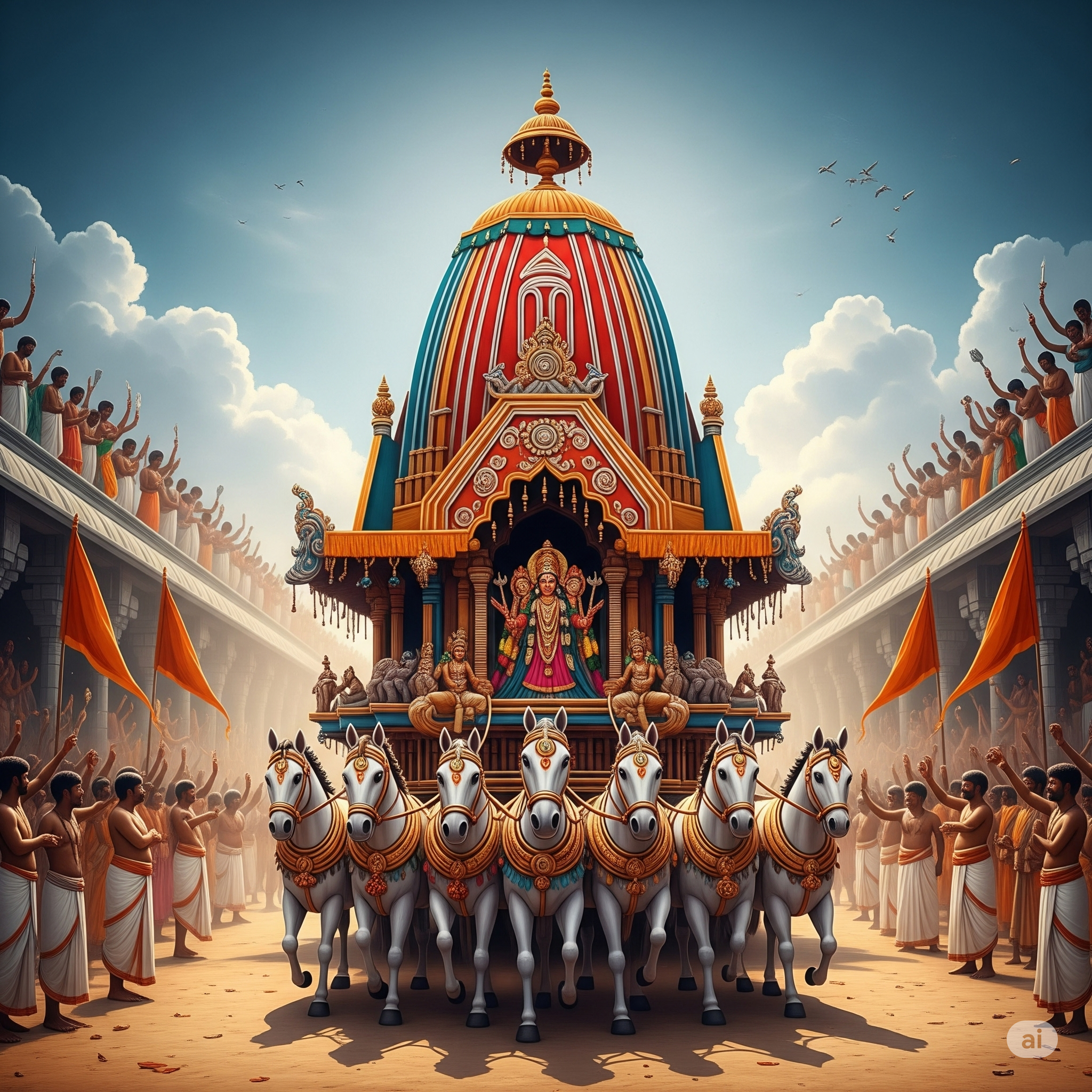Facts about Darpadalana Rath: The Serene Chariot of Goddess Subhadra

## **Darpadalana Rath: The Serene Chariot of Goddess Subhadra**
In the grand festival of the **Rath Yatra** of Puri, though Lord Jagannath’s resplendent **Nandighosha** and Lord Balabhadra’s gigantic **Taladhwaja** command most of the attention, the third chariot—**Darpadalana**—has a special place in the hearts of people. The chariot of **Goddess Subhadra**, the divine sister of the two brothers, Darpadalana is the personification of *Shakti* (divine feminine power), peace, and harmony.
—
### **Who is Goddess Subhadra?**
Goddess Subhadra is worshiped as a symbol of divine strength and mercy. In Jagannath tradition, she is considered the bond between Lord Jagannath and Lord Balabhadra. Her presence in the Rath Yatra represents harmony, family ties, and the auspiciousness of feminine divinity.
—
### **Darpadalana Rath: Design and Features**
The **Darpadalana Rath** or **Padmadhwaja** possesses some outstanding features:
* **Name:** *Darpadalana* (literally meaning “crusher of pride”)
* **Deity:** Goddess Subhadra
* **Color Scheme:** Vibrant **red and black**, representing strength and good fortune
* **Height:** Approximately **42 feet (12.9 meters)**
* **Wheels:** **12 wooden wheels**
* **Charioteer:** *Arjuna*, the prince of Pandavas
* **Guarding Deity:** *Jayadurga*
* **Ratha Flag:** *Nadambika*
* **Horses:** Four **red horses** named *Rochika*, *Mochika*, *Jita*, and *Aparajita
The whole chariot structure is constructed according to prehistoric Vedic norms and rituals. There are no modern-day tools or nails; carpentry techniques of old ensure that each joint is consecrated and spiritually oriented.
—
### **Significance of the Name ‘Darpadalana’**
The name **Darpadalana** is symbolic. “Darpa” refers to ego or pride, and “dalan” refers to destroyer. As indicated by the name itself, **Goddess Subhadra** in this chariot represents ego destruction and pride. It is a revelation of humility, grace, and surrender to the divine.
—
### **Spiritual Significance**
* The **black** color symbolizes the otherworldly power of the universe and the feminine nature of creation.
* The **red** represents the life energy, fertility, and divine power.
* The **12 wheels** reflect the 12 months of the year as well as the cyclical motion of time and dharma.
Subhadra’s chariot, as the sole feminine deity in the procession, is the balance of her assertive brothers—a testament to the divine feminine’s fundamental place in cosmic equilibrium.
—
### **Rituals and Participation**
During Rath Yatra day, **Goddess Subhadra** is ritually brought out from the sanctum and seated in the Darpadalana chariot with chants, drumbeats, and conch blowing. People pull her chariot by ropes, hoping that this process will bring divine favors and cleanse their lives of negativity and arrogance.
—
### **Subhadra’s and Her Rath Important Rituals**
1. **Snana Purnima:** Purifying bath of the gods, followed by seclusion (*Anasara*).
2. **Rath Yatra:** Subhadra sits in Darpadalana and traveled to the Gundicha Temple.
3. **Hera Panchami:** Feted to commemorate Goddess Lakshmi, demonstrating intricate divine relationships between goddesses.
4. **Bahuda Yatra:** The ride back from Gundicha Temple.
5. **Suna Besha:** The golden dress ritual after the return, in which Subhadra is dressed up in gold jewelry.
—
### **Devotional Importance**
Subhadra’s poised and serene form on the chariot imparts humility, patience, and elegance. Women devotees especially hold her as a model of divine womanhood and equilibrium. Her chariot, though the smallest in size, emanates tremendous spiritual power and draws millions of devotees annually.
—
### **Conclusion**
The **Darpadalana Rath** isn’t merely a chariot—it’s the rolling temple of Goddess Subhadra, a divine energy that glides smoothly through the streets of Puri during the Rath Yatra. Her presence calms, harmonizes energies, and reminds humans of the strength of compassion and humility.
While millions look on, Darpadalana stands tall as a symbol of feminine divinity and religious power—unassuming, serene, yet powerful beyond measure.





